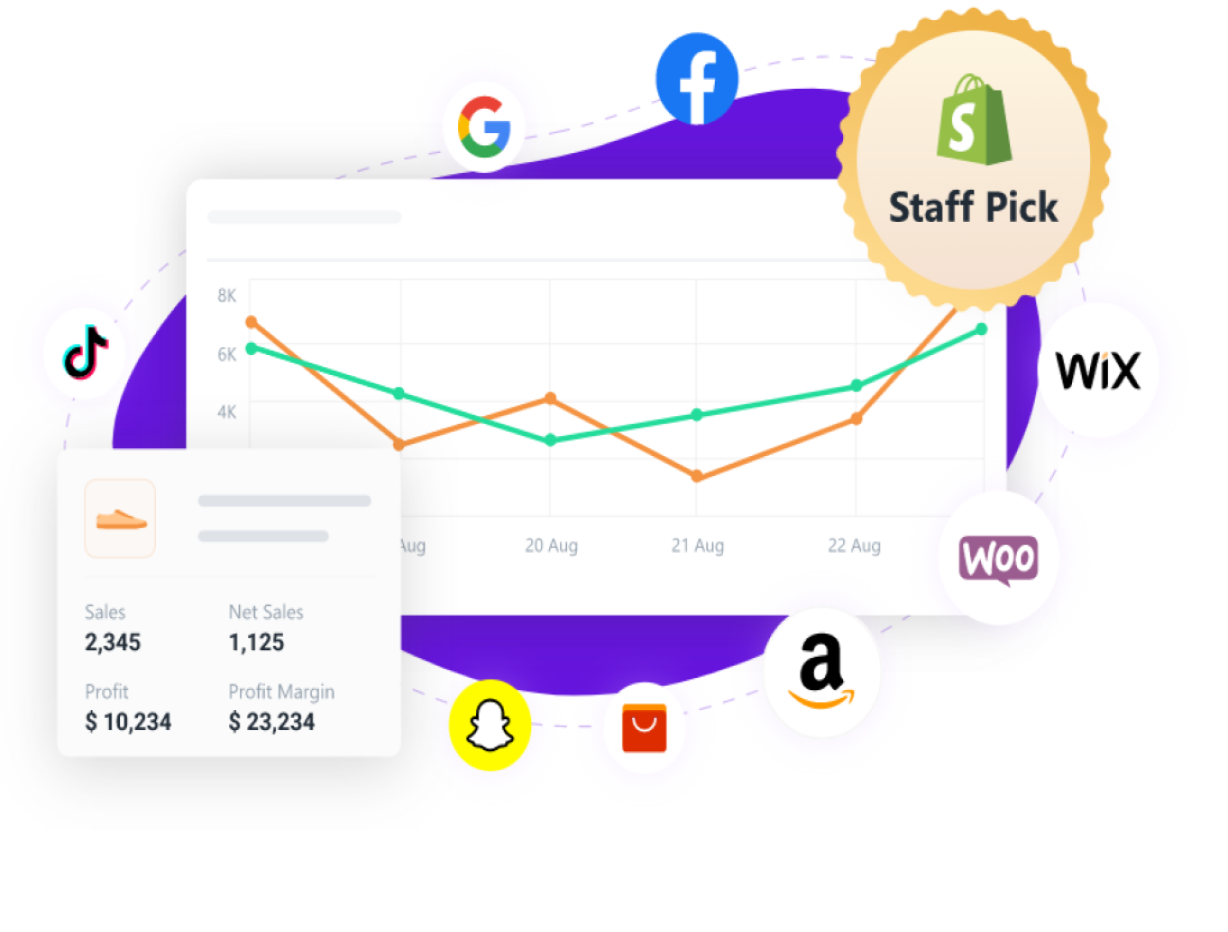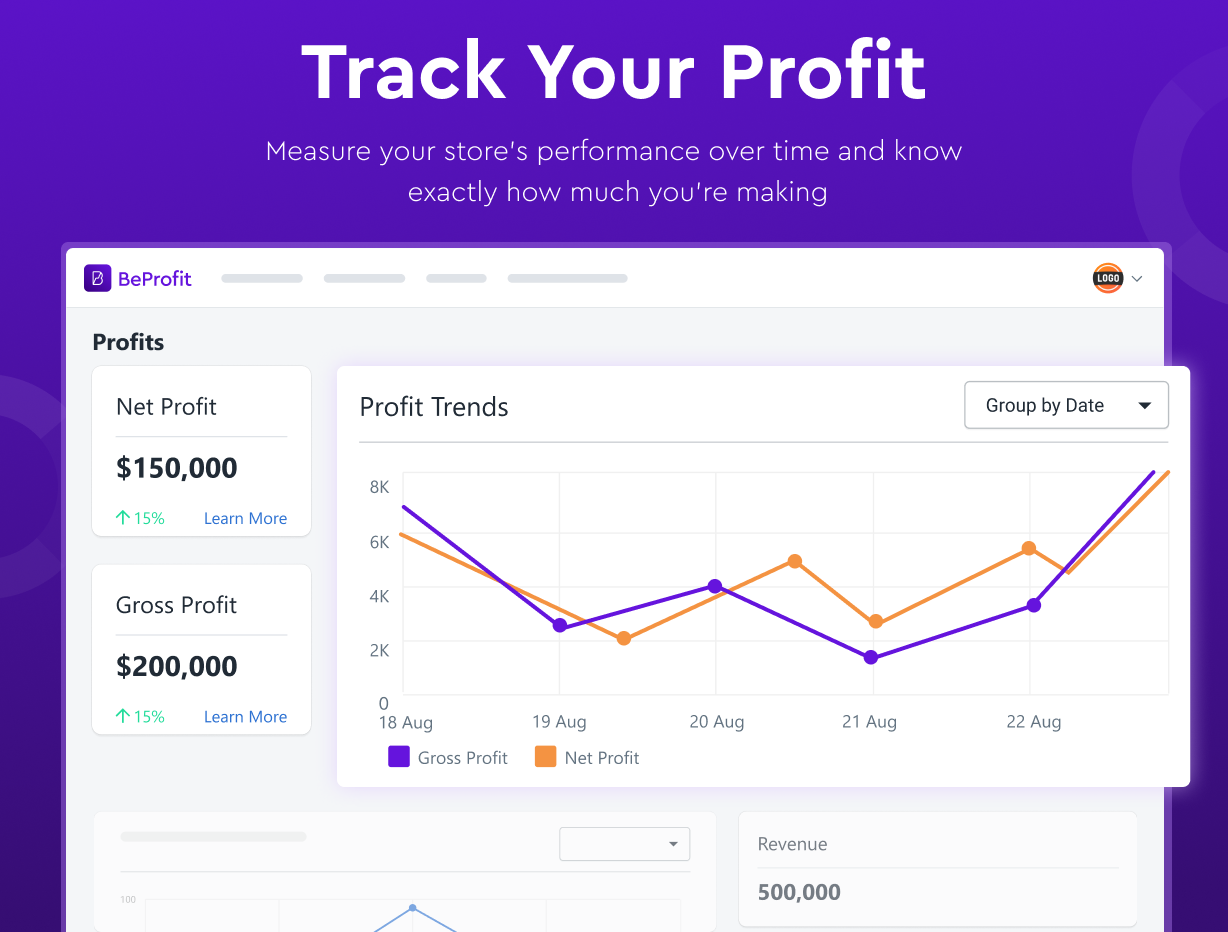5 Easy Ways to Calculate Shipping Cost to Sales Ratio
Updated June 9, 2023

Shipping rates can have a significant impact on e-commerce sales and profits. Consider that online retailers often have to allocate around 70% of an average order value (AOV) just to cover the costs of fulfilling orders. So, understanding how to effectively manage shipping costs is crucial for e-commerce businesses to maintain a healthy bottom line and maximize profitability. One way to do this is to calculate your shipping cost to sales ratio.
Shipping Costs and Sales: What to Know
Shipping cost to sales ratio measures how much you're spending to get your products into your customers' hands relative to your revenue.
- This metric shows how much shipping costs impact your overall profitability.
- A high ratio means a significant portion of your sales goes toward covering shipping costs.
- As a result, your shipping options may be too expensive for your customers causing them to abandon carts and convert less.
- A low ratio means your current operations are cost-effective.
- You have more flexibility and can offer your customers cheaper or free shipping options, increasing their loyalty and encouraging repeat purchases.
5 Ways to Calculate Your Shipping Cost to Sales Ratio
- Simple formula method
- Order-based method
- Weight-based method
- Carrier-based method
- Online shipping calculators
1. Simple Formula Method
Shipping Cost to Sales Ratio = Shipping Cost ÷ Total Sales
This is the most straightforward way to calculate your shipping cost to sales ratio.
For example, imagine your online store has total sales of $10,000 for the month and you've spent $1,000 on shipping. Using the formula, your shipping cost to sales ratio would be $1,000 ÷ $10,000 = 0.10 or 10%. This means for every dollar you make in sales, you're spending ten cents on shipping.
2. Order-Based Method
Shipping Cost to Sales Ratio =
Average Shipping Cost per Order ÷ Average Revenue per Order
The order-based method is another way to crunch the numbers. Here, you calculate the average shipping cost for each order and contrast it with your average revenue per order. This approach shines when your shipping costs aren't consistent but fluctuate across orders. By monitoring these figures over time, you can spot patterns and sniff out any emerging problems.
For example, you have 100 orders in a month with a total shipping cost of $1,500 and total revenue of $20,000. The average shipping cost per order would be $1,500 ÷ 100 = $15, and the average revenue per order would be $20,000 ÷ 100 = $200. Using the formula, your shipping cost to sales ratio would be $15 ÷ $200 = 0.075 or 7.5%.
» Follow these tips to make sure your order fulfillment process is up to scratch
3. Weight-Based Method
Shipping Cost to Sales Ratio =
Total Shipping Cost for Weighted Products ÷ Total Sales
The weight-based method is particularly suitable if your products have considerable weight differences. Here, shipping costs are calculated based on the weight of each product. It's like playing a balancing act: heavier items tip the scale toward higher shipping costs.
However, this method does call for a bit more homework. You need to be well-versed with the weight of each of your products and the corresponding shipping rates. Once you've got that sorted, it becomes a straightforward multiplication: product weight x shipping rate per unit weight.
For example, you sell two types of products: Product A weighing 1 pound and Product B weighing 5 pounds. In a month, you've sold 100 units of Product A and 50 units of Product B. The shipping cost for Product A is $1 per unit and $5 per unit for Product B. The total shipping cost for weighted products would be (100 * $1) + (50 * $5) = $300. If your total sales for the month are $5,000, then your shipping cost to sales ratio would be $300 ÷ $5,000 = 0.06 or 6%.
4. Carrier-Based Method
Shipping Cost to Sales Ratio =
Total Shipping Cost with Carrier ÷ Total Sales
This approach focuses specifically on your chosen shipping carrier. Different carriers charge different rates for shipping, based on things like the weight, size, and destination of the package. So, you might use one carrier for local shipments and another for international shipments. By understanding the carrier-based method, you can choose the right carrier for each shipment to keep costs down and ensure that your package arrives in a timely manner.
For example, you spend $800 on shipping with Carrier X and $500 with Carrier Y. Your total sales for the month are $10,000. Using the formula, your shipping cost to sales ratio for Carrier X would be $800 ÷ $10,000 = 0.08 or 8% and $500 ÷ $10,000 = 0.05 or 5% for Carrier Y.
» Carriers also offer shipping insurance options: Here's how to choose the best one
5. Online Shipping Calculators
Online shipping calculators are like your personal math helpers. You input your data, like shipping costs and sales, and they spit out your shipping cost to sales ratio.
But these calculators don't stop at just that. They're designed to be versatile, offering a suite of additional features. They can trace the trajectory of your ratio over time, providing visual graphs that highlight trends and shifts. Plus, they can simulate different shipping scenarios, helping you anticipate costs and make informed decisions.




- Sync all expenses to one dashboard
- Link all your stores and shipping profiles to one platform
- Customizable reports and interface
» Not sure which shipping metrics to look at first? Here's a core list
Optimize Your Shipping to Sales Ratios for Better Profits
By understanding the different methods for calculating shipping costs and choosing the right carrier for each shipment, you can keep your shipping costs under control and ensure that your customers are happy with their purchases. Additionally, offering free or discounted shipping on larger orders can incentivize customers to spend more money and help increase your overall sales.
In the dynamic world of e-commerce, staying flexible and adaptable is key. Don't shy away from experimenting with different shipping strategies and utilizing innovative tools at your disposal. By doing so, you can find what works best for your business, optimize your operations, and ultimately, achieve a more profitable bottom line.








